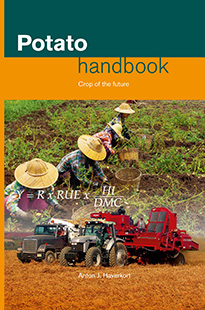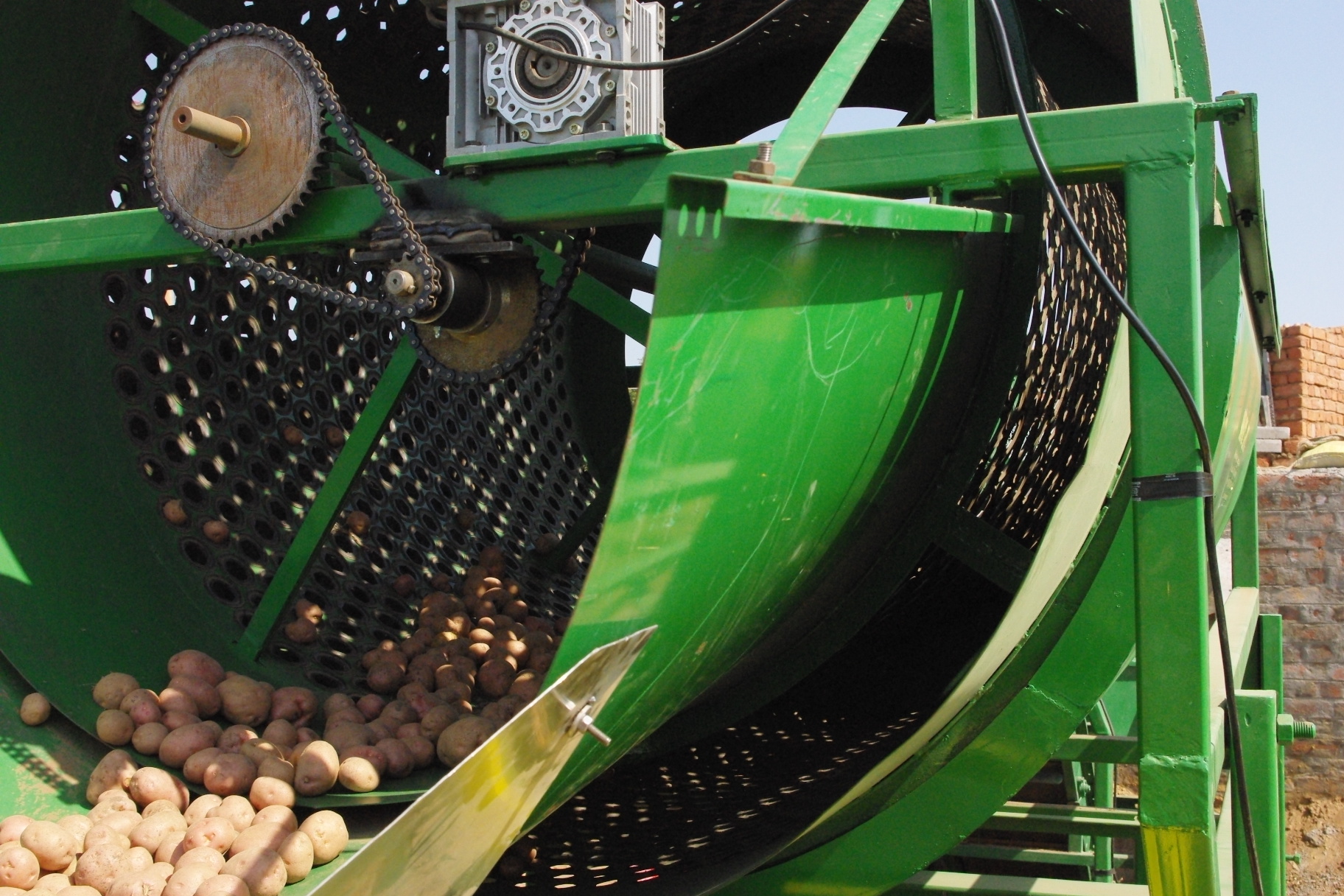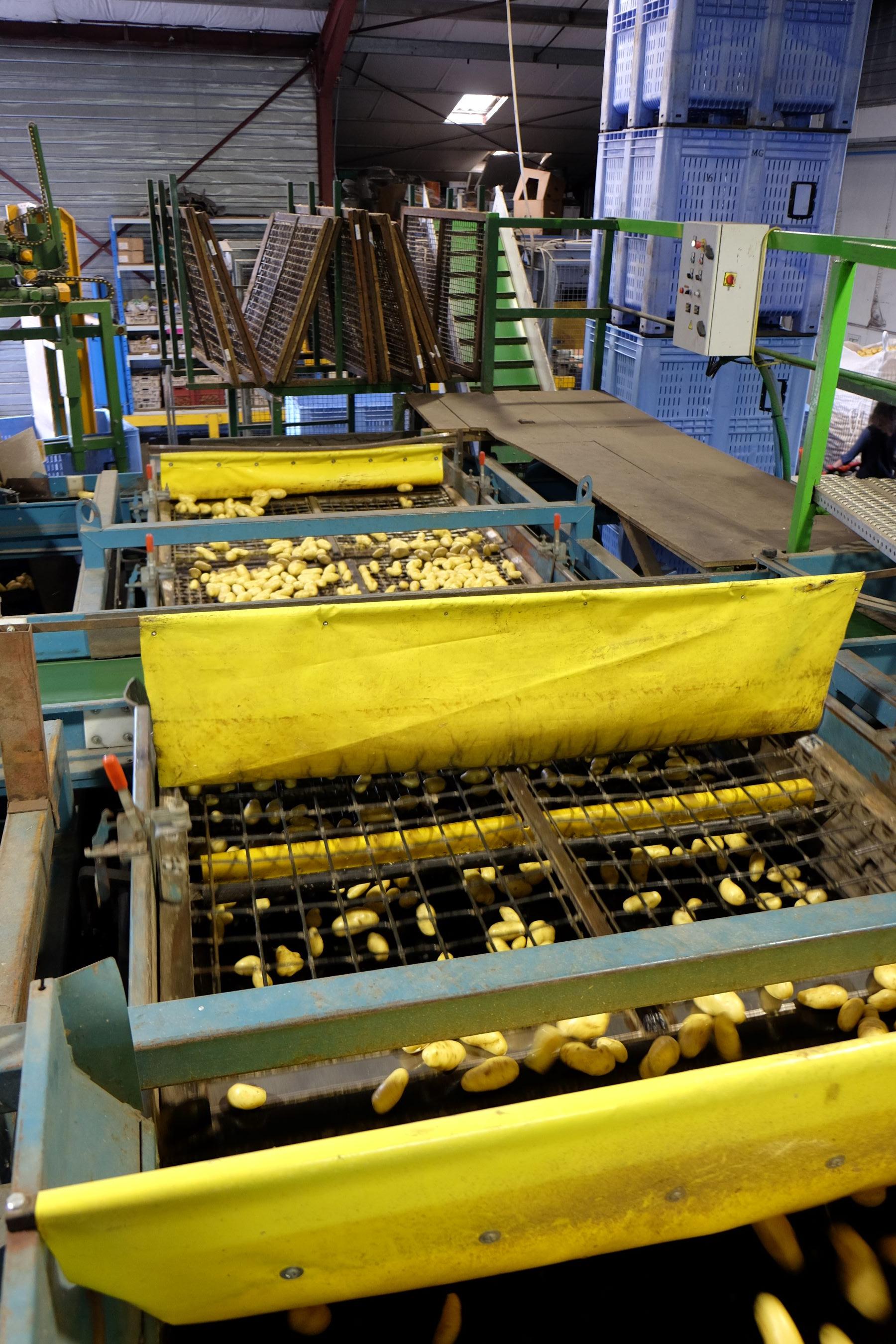Already a subscriber? Activate your premium account

Potato Handbook

Tuber grading takes place when the tubers enter the store or when they leave the store. Processing companies for chips production take in the whole crop and grade it at their facilities. They produce various end-products for which there are specifications of the raw material. Crisps makers only make crisps (and flakes of the unusable material).
Seed tubers are also handled at times in between, when it fits in the work schedule of the grower. When graded at entering the store they allow different sizes to be stored and delivered in and from different compartments. Grading by machine is a continuous action. Tubers are fed by hand or by a conveyor belt to an apparatus that divides the tubers into pre-set sizes by conducting them over ever-wider spaces, whereby the smaller tubers are removed first and the largest the latest or the other way around. A roller grader has rolls that are spaced apart at ever larger distances so the smallest ones are removed first. A web grader has the largest web on top and first removes the largest tubers, the smaller ones drop to the next web. Once passed through the grading hole by gravitation on a sloping plate or a belt, the tubers are conveyed size by size to bags, boxes, containers or piled in a compartment of the store.
Combining sorting and size grading
Optical graders, combine sorting (culling, removal of unwanted tubers and non-tuber particles) with size grading. Moreover, the proportion of skin affected by common and powdery scab (Streptomyces scabies and Spongospora subterranea) and black and silver scurf (Rhizoctonia solani and Helminthosporium solani) is detected and recorded per tuber and averaged per lot. Each individual tuber is imaged some 40 times with near infrared (NIR) and red-green-blue (RGB, true colors) within a fraction of a second and a very narrow size (and volume) distribution is established. This is of particular importance when valuable material is graded where not only size matters, such as samples at the receiving end of a processing or seed potato line. When grading seed, the smallest size is, say, 28 mm with the still smaller ones discarded as fodder for cattle and the larger than 55 mm, not fit for seed (if not cut), are set aside to be used as ware potato. For ware potatoes, the sizes are larger and for processing potatoes larger still, although consumers in some countries prefer buying large size table potatoes such as Argentinians and Tunisians who use variety Spunta.

Mechanical graders use webs of different sizes to separate tubers into different classes.
Events
©2015 - 2024 Potatoworld | Webdesign and realisation COMMPRO